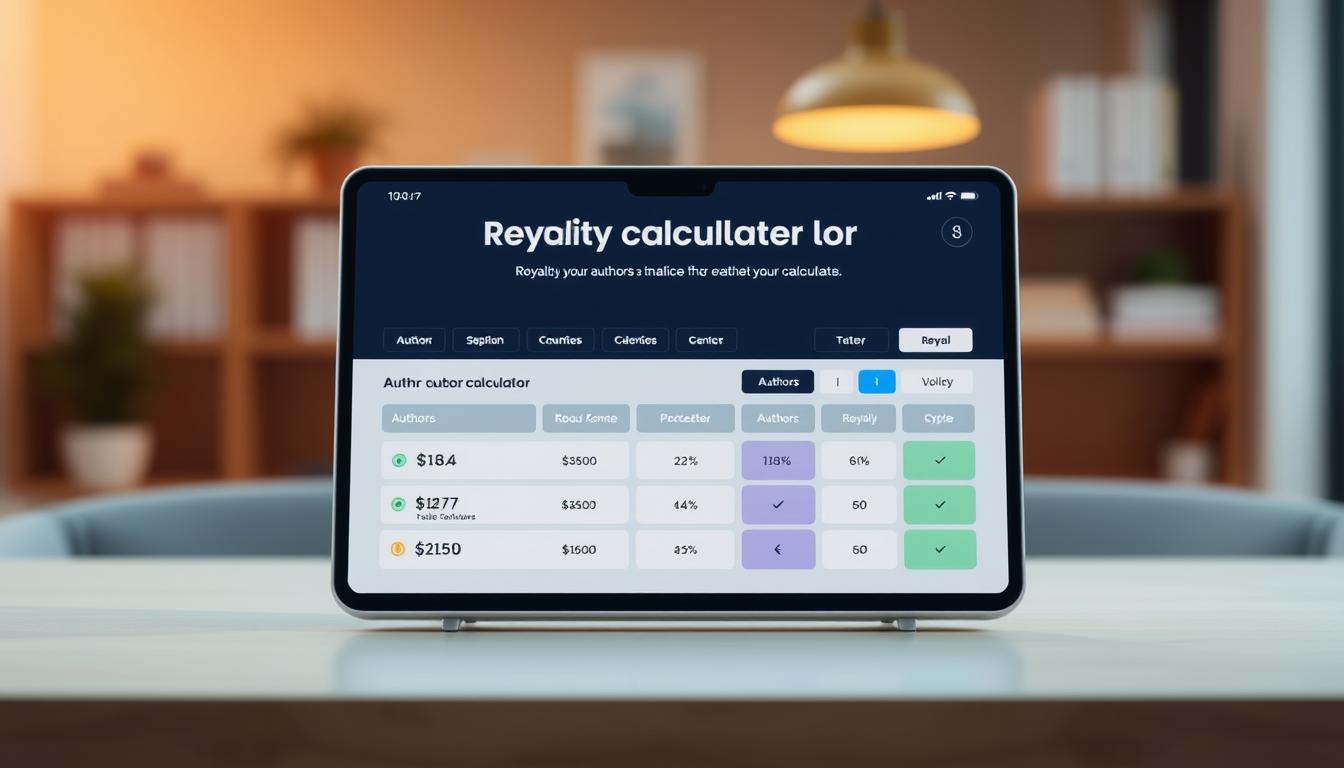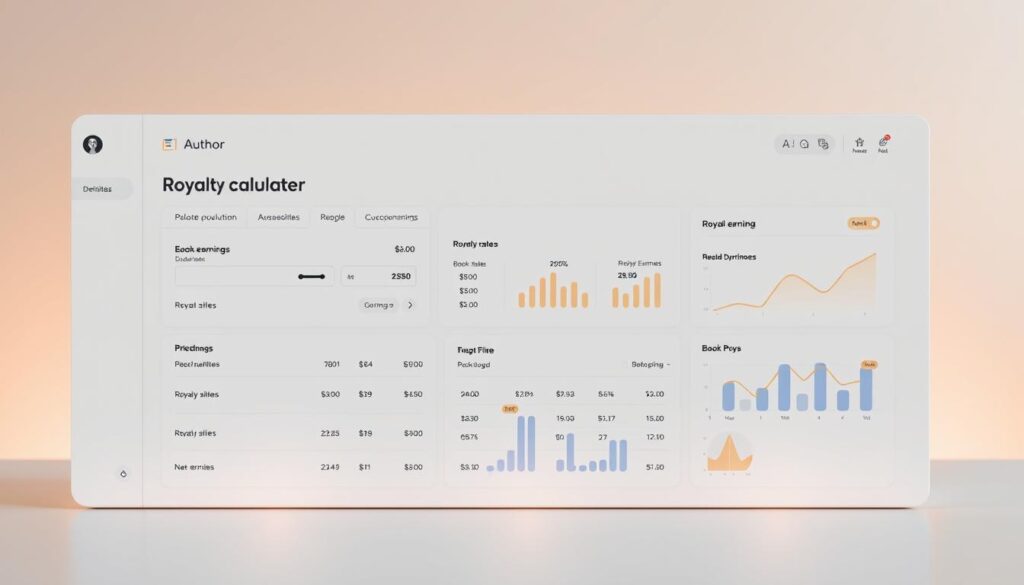Physical Address
304 North Cardinal St.
Dorchester Center, MA 02124
Physical Address
304 North Cardinal St.
Dorchester Center, MA 02124

Navigating the world of book sales can feel overwhelming, especially when trying to predict your income. This guide is designed to simplify that process. You’ll learn how to turn creative work into a reliable revenue stream by understanding the mechanics behind your earnings.
Many writers focus solely on crafting stories, but financial clarity is just as vital. Without it, you might undervalue your work or miss opportunities to grow your income. Tools that analyze costs, distribution fees, and market trends give you an edge in today’s competitive landscape.
Newcomers often wonder how much they’ll earn from their debut novel. Seasoned authors, meanwhile, seek ways to boost profits across multiple titles. This resource addresses both needs by breaking down pricing strategies, platform differences, and hidden expenses that impact your bottom line.
The right approach transforms writing from a passion project into a sustainable career. By the end of this guide, you’ll know how to leverage data to make smarter decisions—and keep more of what you earn.
Setting the right price for your book starts with mastering production expenses. Three main factors shape your printing cost: total pages, binding style, and ink choices. A 300-page novel with color illustrations costs far more to produce than a 150-page black-and-white paperback.
Physical details matter more than you might think. Hardcovers add 40-60% to your base expenses compared to softcovers. Color pages often triple the ink costs per sheet. These choices directly influence your Minimum Selling Price (MSP) – the break-even point covering all production and shipping fees.
| Factor | Cost Impact | Pricing Tip |
|---|---|---|
| Page Count | +$0.02 per page | Trim non-essential content |
| Hardcover Binding | +$4.50 per copy | Reserve for special editions |
| Color Pages | +$0.15 per sheet | Use sparingly in key sections |
Your final printing cost locks in only after submitting press-ready files. That’s why savvy writers create mockups early. Always set your retail price above the MSP – this gap determines your actual earnings per sale.
International markets bring extra conditions. Paper quality standards and shipping tariffs can push costs 20% higher than domestic production. Adjust your pricing strategy for each region to maintain healthy margins without overpricing your work.
Unlocking your book’s earning potential requires smart use of modern tools. Start by entering precise details like page count and binding type into your profit analysis tool. These specs shape production costs, which directly determine your earnings.

The core formula is simple: Retail Price – (Printing + Distribution Costs) = Your Profit. A $20 book with $8 printing and $7 distribution fees leaves $5 per copy. This math drives every financial choice you make.
Your personalized performance hub turns numbers into action plans. Track real-time sales across platforms, spot top-selling channels, and monitor order completion rates. This intel helps refine marketing tactics and inventory decisions.
| Format | Retail Price | Total Costs | Profit |
|---|---|---|---|
| Paperback | $15 | $6 | $9 |
| Hardcover | $25 | $12 | $13 |
| Special Edition | $30 | $18 | $12 |
Test different pricing strategies using your digital tool. Compare how hardcover margins stack against paperback options. Adjust for limited editions or bulk deals to boost income without pricing out readers.
Weekly check-ins on your dashboard reveal patterns. Notice holiday demand spikes or summer slumps? Time promotions strategically. Live updates keep you responsive in fast-changing markets.
Smart distribution choices can transform your book’s financial performance. Platforms take vastly different cuts – 40% fees at some retailers versus 20% at others. That gap means more money stays in your pocket with strategic platform selection.

Subscription services often beat traditional models for multi-title writers. Consider this breakdown:
| Model | Copies Sold | Annual Earnings |
|---|---|---|
| Revenue Share | 5,000 | $8,970 |
| Subscription | 5,000 | $10,213 |
Why the difference? Subscription platforms pay based on reading time rather than flat rates. Six $2.99 ebooks in this system could net 14% more than standard sales.
Global markets demand fresh tactics. “Pricing isn’t one-size-fits-all – Brazil’s paperback costs differ wildly from Germany’s,” notes a Penguin Random House manager. Factor these when expanding:
Track quarterly sales data to time strategy shifts. Shift focus to high-margin formats before holiday rushes or literary festivals. Diversify across 3-5 platforms to balance earnings and reach.
“Authors leaving money on the table usually overlook subscription models and international VAT rules.”
To thrive as an author, understanding the numbers behind your book sales is crucial. Tools like this profit analysis tool turn complex data into clear strategies, showing how format choices and regional distribution costs shape your income.
Track your dashboard regularly to spot trends. Seasonal demand shifts or format preferences in different markets can guide smarter pricing adjustments. A $2.99 ebook might outperform a $15 paperback in subscription models, while special editions could boost margins during holidays.
Remember: every print run and digital order carries unique expenses. Paper quality, page count, and taxes vary globally—factor these into your price points. Writers who adapt to these details often see 10-15% higher annual earnings.
Your story deserves financial clarity as much as creative polish. Pair compelling writing with sharp business decisions to build a lasting career. The right mix of formats, platforms, and pricing turns pages into profits.